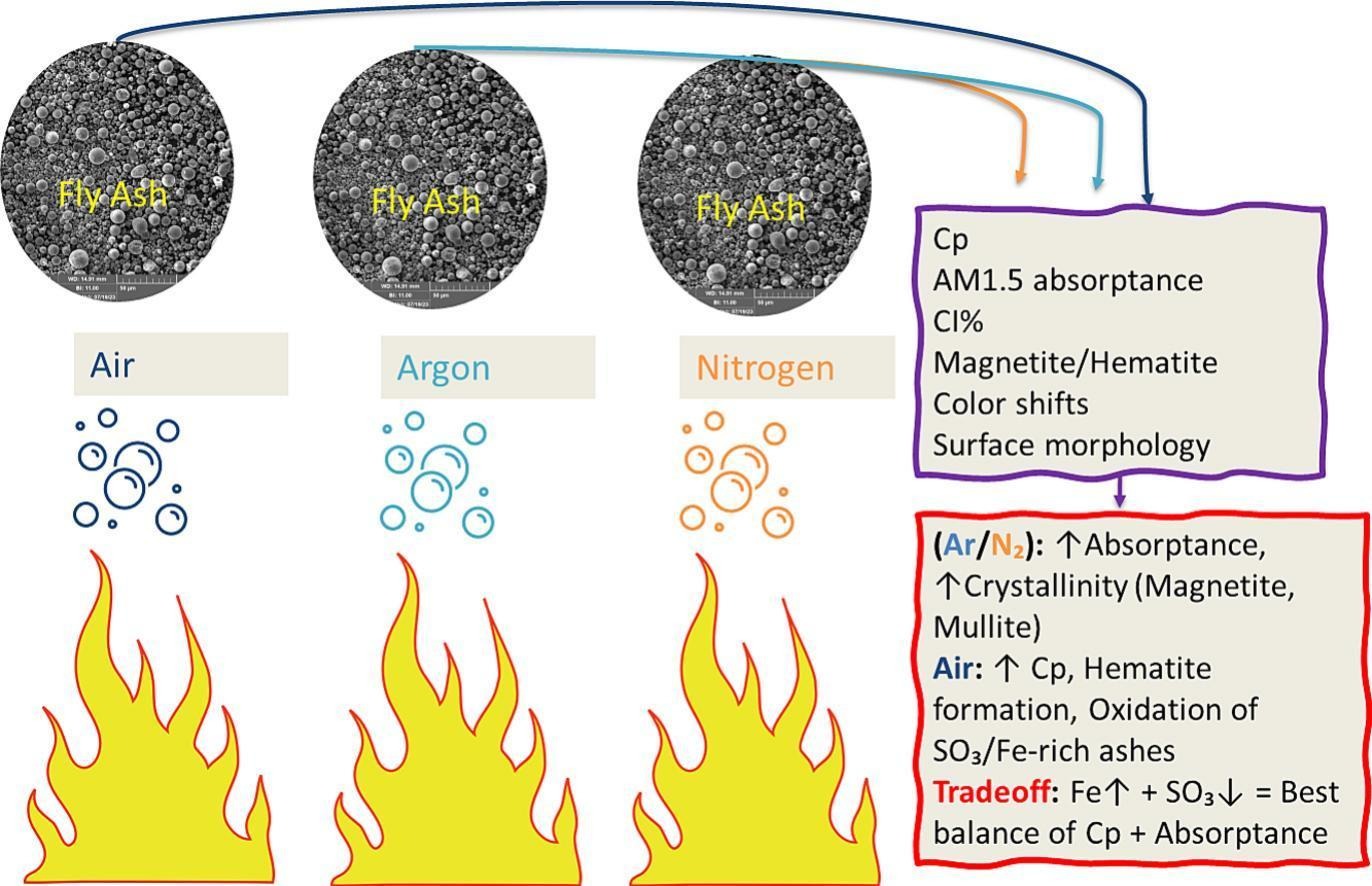Effect of temperature and atmosphere on the optical, thermal, and structural properties of fly ash particles
A peer-reviewed study investigating if recycled coal fly ash can be used as a substrate for concentrated solar power.
The following link takes you to the report Effect of temperature and atmosphere on the optical, thermal, and structural properties of fly ash particles in the peer-reviewed journal Powder Technology. I played a key role in buiding the data visualisations, analysis and manuscript development in this report:
Read the full article on ScienceDirect
Abstract
 D. Glosser, N. Fish, G. Scoville, K. Oos
2025
D. Glosser, N. Fish, G. Scoville, K. Oos
2025
High temperature particulate materials are widely used in sensible thermal energy storage applications. Increasingly, thermal systems are incorporating non-oxidative working fluids for either particle heating or storage. This study systematically evaluates six coal fly ashes, a promising TES substrate, thermally cycled to 800 °C and 1000 °C in air, argon, and nitrogen. Solar absorptance, specific heat capacity, crystallinity (CI%), and microstructure were characterized before and after cycling, and simple Fe2+ and Fe3+ indices were calculated from reflectance measurements as spectral proxies of iron redox behavior. Results show that atmosphere exerts a stronger influence on absorptance than temperature: inert environments preserve or increase absorptance relative to as received conditions (+12 % on average) whereas air exposure reduces absorptance (−12 % on average). Temperature alone explains <1 % of absorptance variance. The Fe2+ index correlates more strongly with absorptance than either the Fe3+ index or bulk iron content (pooled R2 = 0.83 vs 0.59 vs 0.60) consistent with ferrous-band darkening in the NIR. Sulfate-rich ashes show the largest absorptance losses in air, coinciding with lighter color shifts, hematite XRD signatures and stronger shifts towards Fe3+ bands. CI% increases with temperature across all conditions (mean values: 20 % as received, 25 % in air, 28 % in argon, 48 % in nitrogen). In contrast, specific heat capacity at 550 °C is generally higher in air-cycled samples than in their inert counterparts. These findings underscore key tradeoffs in material optimization: inert atmospheres enhance absorptance and CI%, while air promotes modest gains in heat capacity. Ashes with low sulfate, high iron, and moderate initial CI% may provide the best balance of TES properties.